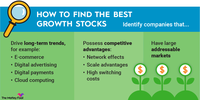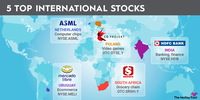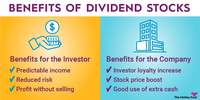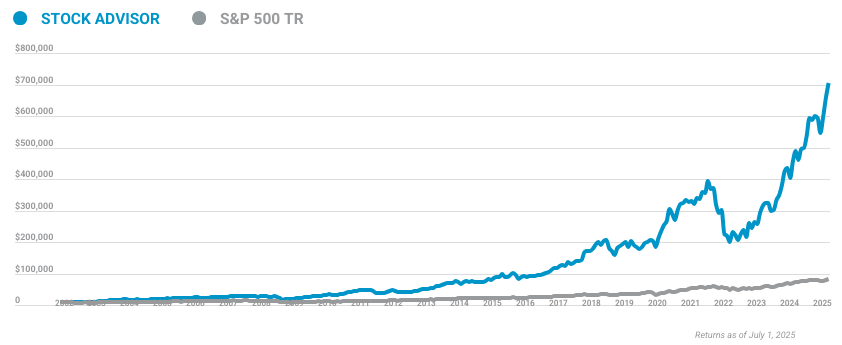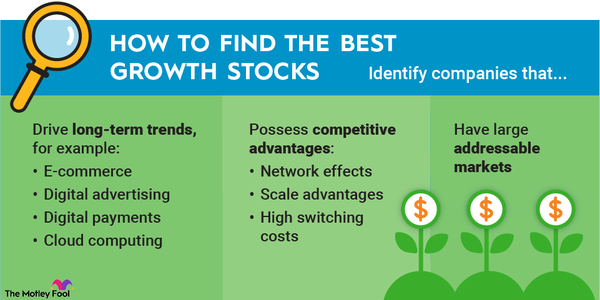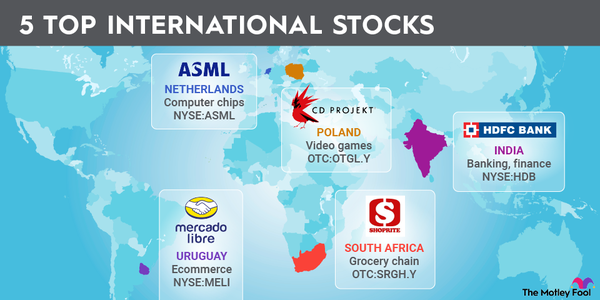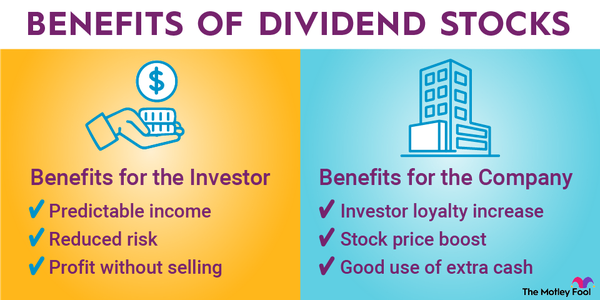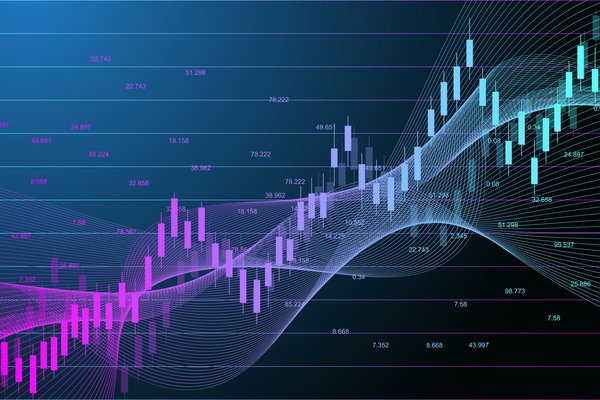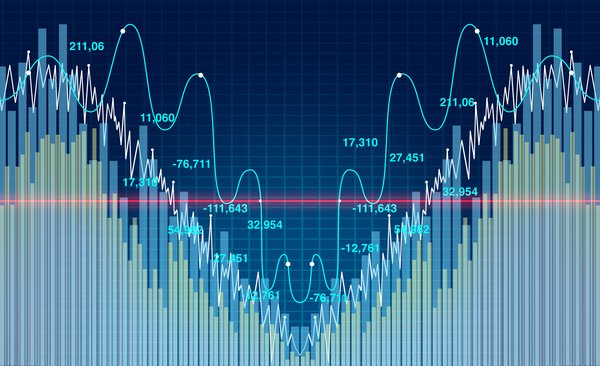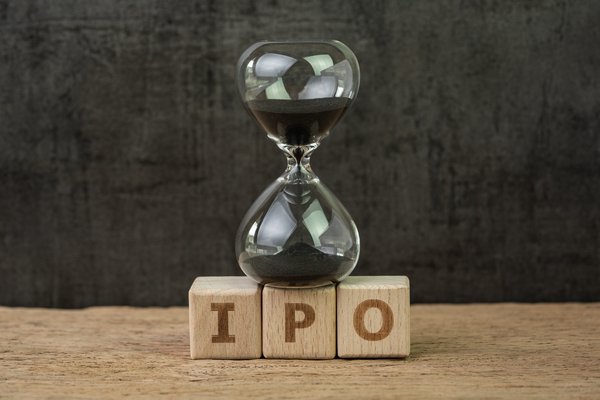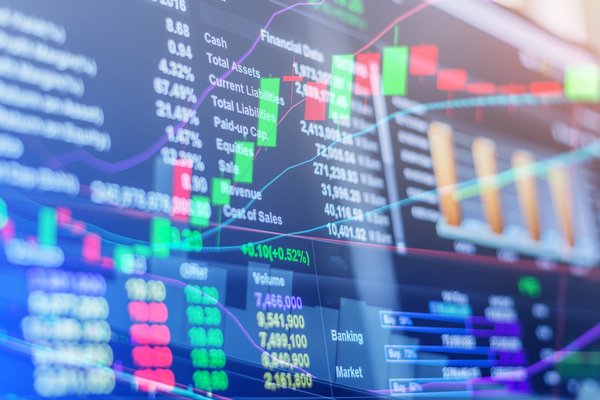Large-cap stocks include many of the best-known companies in the world, and although they might not be as exciting as smaller companies with high growth potential, they are typically a safer investment. Explore the world of large-cap stocks and learn how these can shape your portfolio.

What is a large-cap stock?
What is a large-cap stock?
A large-cap stock is the stock of any publicly traded company valued at more than $10 billion. Sometimes called big-cap stocks, large-cap stocks are often considered the stalwarts or blue chips of the stock market. Think of companies such as Walt Disney (NYSE:DIS), Coca-Cola (KO 2.14%), and General Motors (NYSE:GM) -- established giants with leading positions in their industries.
The very largest large-cap companies, such as Amazon (NASDAQ:AMZN) and JPMorgan Chase (NYSE:JPM), that have market caps of more than $200 billion, also fall into the large-cap category. Some investors think of them as a separate type of stock, called mega-caps, but, for most purposes, they’re just "jumbo" large-caps.
While many investors consider smaller, fast-growing companies to be more exciting, large-cap stocks can be very profitable opportunities for investors who take the time to understand them. Because these mammoth companies tend to be less volatile than their smaller siblings, they can also help to diversify a portfolio of smaller stocks while still providing good share price growth over time. Their principal advantage is that they are a safer investment since they are more established than smaller companies and have competitive advantages and more reliable profit streams. For that reason, large-cap stocks tend to outperform small-caps during a bear market.
There are some large-cap growth stocks that are available, which are typically stocks such as MercadoLibre (NASDAQ:MELI) or chipmaker Nvidia (NASDAQ:NVDA). There is no strict definition for a growth stock, but, in general, any company increasing its revenue by 20% or more can be considered a growth stock.
Large-cap growth stocks are the exception, however. Large-cap stocks are typically mature companies with moderate growth prospects. Investors seeking high growth potential may prefer to invest in smaller companies at the lower end of the market cap range.
| Category | Market Capitalization |
|---|---|
| Micro-cap companies | Less than $300 million |
| Small-cap companies | $300 million to $2 billion |
| Mid-cap companies | $2 billion to $10 billion |
| Large-cap companies | $10 billion to $200 billion |
| Mega-cap companies | More than $200 billion |
Large-cap companies are typically older and well-established, and they usually pay reliable dividends. Not all are household names, but many are well-known. The large-cap blue chips are stable businesses with respected management teams, strong credit ratings, and long histories of profits. Others, generally industrial giants, are characterized by their cyclical business cycles, meaning that their profits and stock prices tend to move with the overall economy. Some large-cap companies are fast-growing and may have been in the mid-cap or small-cap range just a few years ago.
Large-caps stocks have outperformed their smaller peers over the past decade. They also have done so with less volatility since the S&P 500 didn’t drop as much as the Russell 2000 when the COVID-19 pandemic hit in March 2020.
Top 3 large-cap stocks in 2024
Top 3 large-cap stocks in 2024
Here are some excellent large-cap stocks to consider:
1. Starbucks
1. Starbucks
Starbucks (SBUX 0.53%) has historically outperformed the broader market since its 1992 initial public offering (IPO) and looks poised to continue gaining market share as it recovers from the pandemic. Starbucks is a good example of a large-cap stock that offers growth potential with opportunities in China, digital, and delivery, as well as reliable profit streams. The company has considerable competitive advantages, including its well-known brand, popular rewards programs, and tech initiatives such as Mobile Order & Pay.
Starbucks has faced challenges that include a pandemic lockdown in China, a unionization push, and a tight labor market in the U.S. Still, the company has gotten through difficult times before and should do so again.
The company started paying a dividend in 2010 and has raised it every year since then, making it a rewarding dividend stock as well.
2. MercadoLibre
2. MercadoLibre
MercadoLibre (NASDAQ:MELI), Latin America’s largest e-commerce site business, is a great example of a large-cap company that is still growing quickly. MercadoLibre has a number of similarities to Amazon with its leading e-commerce business and shipping network in MercadoEnvios, but it also has unique solutions for Latin America, including providing point-of-sale machines for brick-and-mortar merchants.
That’s one component of the company’s fast-growing payment tool, MercadoPago. Originally a service like PayPal (NASDAQ:PYPL) for MercadoLibre shoppers, it has grown to become something of a multinational bank in Latin America, where it’s used to make payments at places such as grocery stores and gas stations.
3. Walmart
3. Walmart
Walmart (NYSE:WMT) is the world’s biggest retailer, as well as the world’s largest company by revenue. It has many competitive advantages, including economies of scale that work in its favor, a reputation for low prices, and stores within 10 miles of 90% of the U.S. population.
But what makes the company more than just a reliable dividend payer is the fact that Walmart is becoming more than just a retailer. The company is leveraging its physical footprint to enter industries such as healthcare by adding health clinics. It also launched a fintech startup in early 2021 and poached two Goldman Sachs (NYSE:GS) executives to lead it. The company has built a formidable e-commerce business that ranks second in the U.S. behind Amazon, giving it a valuable stake in a rapidly growing market. With the company clearly evolving, Walmart could be a much different organization in five or 10 years.
With its reputation for low prices, Walmart is also well-prepared to endure a recession or economic downturn.
Exchange-Traded Fund (ETF)
Best large-cap funds in 2024
Best large-cap funds in 2024
If you don't want to choose individual large-cap stocks, you can still gain portfolio exposure to the biggest companies by investing in an exchange-traded fund (ETF) or a mutual fund that focuses on large-cap stocks -- or even large cap growth funds.
An exchange-traded fund (ETF) trades on an exchange like a stock, but it is a fund made up of group of stocks that typically have something in common; for example, they belong to the same industry.
ETFs give investors an easy way to invest in a group of stocks rather than picking individual stocks.
ETFs generally charge a small fee to invest in them, known as the expense ratio.
Here are a couple of large-cap-focused funds to consider:
1. Vanguard S and P 500 ETF
1. Vanguard S&P 500 ETF
Vanguard S&P 500 ETF (VOO -0.84%) is an exchange-traded fund that tracks the performance of the S&P 500. Vanguard invented the index fund in the 1980s, and the funds that track the S&P 500 are still the most popular. With an expense ratio of just 0.03%, the fund is basically fee-free, making it a great option for new investors or people who prefer a passive approach to investing in large-cap stocks.
2. Fidelity Contrafund
2. Fidelity Contrafund
Fidelity Contrafund (NASDAQMUTFUND:FCNTX) is a mutual fund that invests in large-cap and mega-cap stocks, typically focusing on large-cap stocks with attractive potential for long-term earnings growth. With an expense ratio of 0.86%, it’s much more expensive than the typical index fund, but the fund is actively managed, meaning that its manager hopes to beat the performance of the S&P 500. The outperformance, at least in theory, is more than enough to offset the higher fees. The Fidelity Contrafund has outperformed the S&P 500 on a total return basis for the past five years.
Revenue
How to evaluate top large-cap stocks
How to evaluate top large-cap stocks
Great large-cap stocks come in different varieties. Some are former small-cap growth stocks that just kept growing, such as MercadoLibre; some, such as Starbucks, are longtime players in industries that are difficult to enter at scale; and some, such as Walmart, are versatile giants with long traditions of strong management and steady growth.
Just about any top large-cap company has visible competitive strengths, a strong brand, proven leadership, and a track record of rewarding investors through dividends, share repurchase programs, or simply long-term share price growth.
Revenue is one key metric for assessing the potential of a large-cap stock. Also known as gross income or the top line because of its position income statement, revenue measures how much money a business brings from selling products and services.
Revenue is measured before costs are subtracted and revenue minus expenses equals profit.
Related investing topics
Reasons to invest in large-cap stocks
Reasons to invest in large-cap stocks
If you can hold an investment for five years or more, and you want stocks with relatively low volatility, then large-cap stocks might be a good fit. If your portfolio is dominated by volatile growth stocks, then adding a few stable large-caps might be a smart move to diversify your holdings without significantly sacrificing growth potential.
Remember that although large-cap stocks are often those of companies that “everybody knows,” it’s still important to do your homework before you buy. Another option is to add a large-cap-focused ETF or mutual fund to your holdings.

